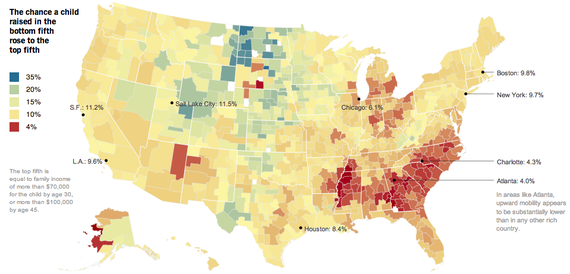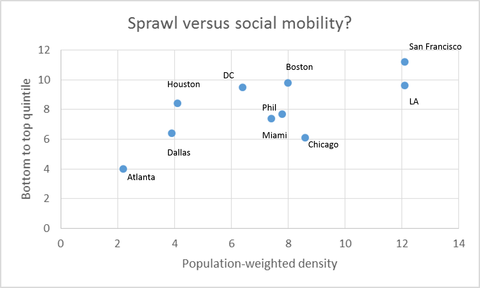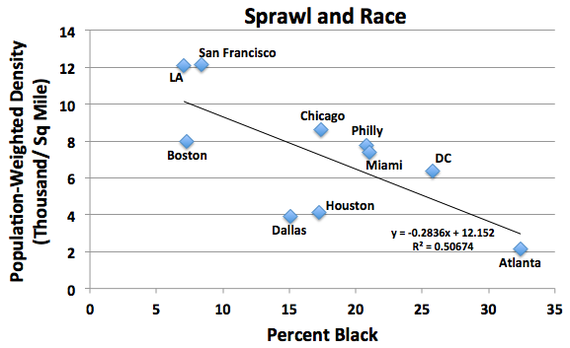Are the Suburbs Where the American Dream Goes to Die?
Matthew O'Brien, The Atlantic, July 23, 2013
Rumors of the American Dream’s demise have been greatly exaggerated–at least in parts of America.
That’s the message of a new study that looks at the connection between geography and social mobility in the United States. {snip} But if you want to move up, don’t move to the South. As you can see in the chart below from David Leonhardt’s write-up in the New York Times, the American Dream is on life support below the Mason Dixon line.
So why does a kid from the bottom fifth in the South or the Rust Belt have such a hard time making it to the top fifth? It’s not how progressive local taxes are. Or the cost of college. Or how unequal a place is. At least not much. The research team of Raj Chetty and Nathanial Hendren of Harvard and Patrick Kline and Emmanuel Saez of the University of California-Berkeley found that these factors only correlated slightly with a region’s social mobility. What seems to matter more is the amount of sprawl, the number of two-parent households, the quality of elementary and high schools, and how involved people are in things like religious and community groups.
The suburbs didn’t quite kill the American Dream, but a particular type did. That’s the low-density and racially-polarized suburbs that have defined places like Atlanta. Indeed, as you can see in the chart below from Paul Krugman, there’s a noticeable relationship between a metro area’s density and its social mobility.
As usual, the elephant in the room here is race. So let’s address it: the researchers found that the larger the black population, the lower upward mobility. But on closer inspection, this has something to do with population density too. I went back to the Census data, and looked at the same ten cities Krugman did, but this time I compared their population-density ratios and the percent of their population that’s black. There isn’t nearly a perfect relationship–look at Boston or Dallas or Houston–but there is a relationship.
Now, it’s not that suburbs outside the South and Rust Belt are some kind of integrated utopia–far, far from it–but rather that density changes things. Well-off whites who work in the city and live close by have an interest in paying for the kind of public goods, like mass transit, that benefit everybody. Well-off whites who live far away don’t. {snip} This malign neglect of infrastructure keeps low-income people from living near or commuting to better jobs–and that’s not a a race issue. Indeed, the researchers also found that whites and blacks in Atlanta both have a hard time moving up. In other words, racial polarization might spur sprawl, which makes cities less likely to invest in their infrastructure–and underfunded infrastructure hurts low-income people of all races.
{snip}


















